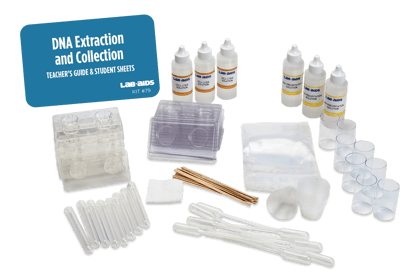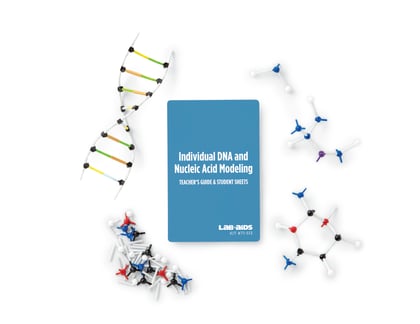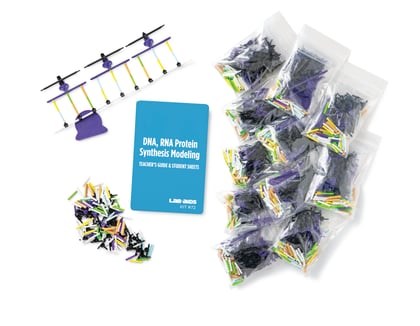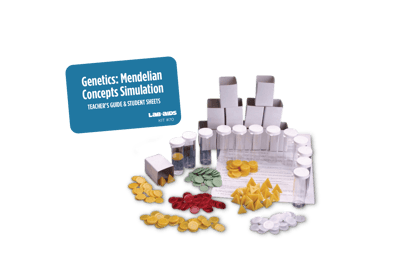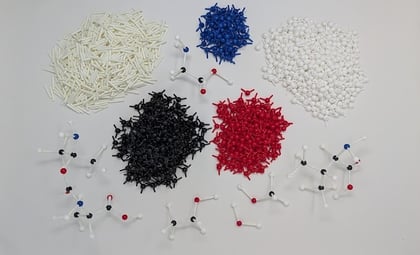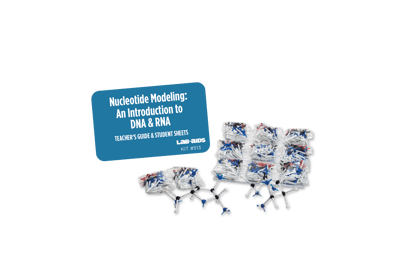DNA Modeling: Molecular Structure & Replication

The two activities in this kit introduce students to the structure of the DNA molecule and how its structure allows it to replicate. Using a unique Lab-Aids modeling set, students first build an 8-rung DNA double helix and learn the base-pairing rule. Then starting with a 4-rung segment, they unzip the ladder and create two identical 4-rung strands by adding in new base pairs and sugar-phosphate groups.
Details at a Glance
- 2-3 Days | 2-3 ~50 minute class periods
- 2 Activities
- Accommodates unlimited classes, each with 16 groups of 2 students
- Meets our criteria for supporting literacy
- All materials are non-consumable
- Includes digital resources
Scientific Concepts
•DNA molecules have a “twisted ladder” double helix structure.
•Each “ladder rung” consists of a nitrogen base pair (single-ring pyrimidine linked to double-ring purine).
•The order of these base pair “rungs” determines the genetic code of every living thing.
•DNA molecules replicate by “zipping apart” where the weak hydrogen bonds connect the nitrogen bases.
•Models help scientists visualize and understand many concepts and processes.
Key Vocabulary: adenine, double helix, hydrogen bond, replication, cytosine, guanine, purine, thymine, DNA, hereditary, pyrimidine
Guides & Student Sheets
Our kits and modules provide you with everything you need so you can open, review, and teach the material confidently the next day.
- Comprehensive Teacher Guide with background information, detailed instruction, example data and answers
- Student Sheets with age appropriate background information, full procedure(s), and analysis items
- Materials necessary for the investigation (beyond common classroom items)
- Safety Data Sheets
Kit Components
- 1 Packet of 256 phosphate groups - white tubes
- 1 Packet of 256 deoxyribose sugars - black pentagons
- 1 Packet of 128 hydrogen bonds - solid rods
- 1 Packet of 64 cytosine (C) - blue tubes
- 1 Packet of 64 thymine (T) - green tubes
- 1 Packet of 64 adenine (A) - orange tubes
- 1 Packet of 64 guanine (G) - yellow tubes
- 16 Resealable plastic bags
- Downloadable pdfs of student and teacher literature

